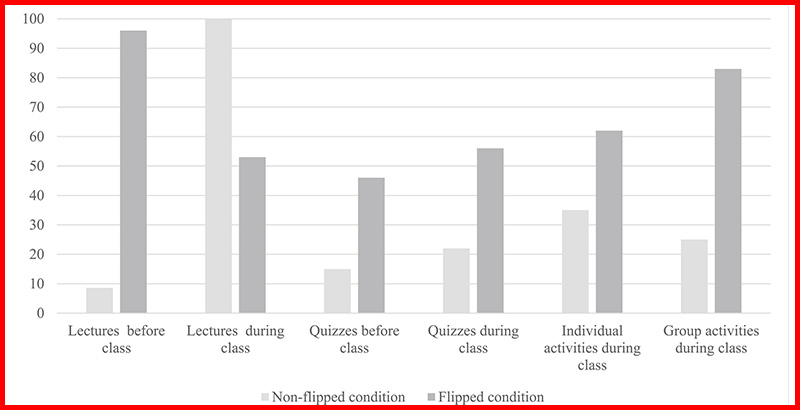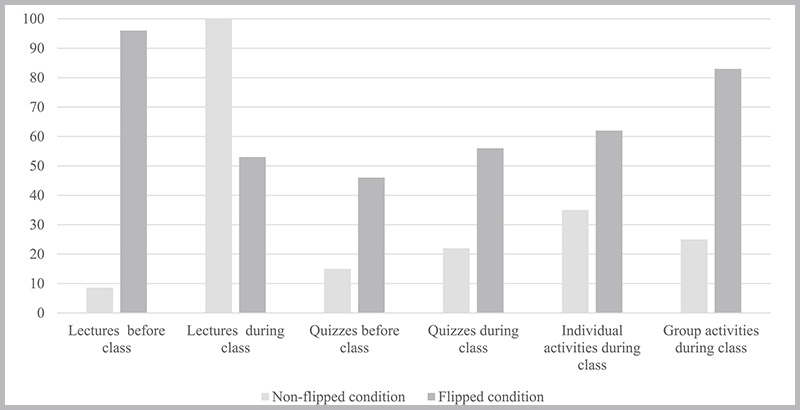What 114 Pre-Pandemic Studies About ‘Flipped’ Classrooms Could Tell Us About Refining Our Approach to Remote Learning in 2021

This article, which originally appeared in The Hechinger Report, is being co-published here via the SoJo Exchange from the Solutions Journalism Network, a nonprofit organization dedicated to rigorous reporting about responses to social problems.
In a flipped classroom, students watch video lectures before class and use class time to work on assignments and group projects. It’s “flipped” because it’s the opposite of the traditional structure in which students first learn from a teacher’s in-class instruction.
Advocates believe that students learn more when class time is spent actively learning instead of passively listening. Flipped classrooms also free up class time for teachers to help students individually, as a tutor does.
Over the past decade, flipping has spread across U.S. classrooms, from city college campuses to suburban elementary schools. But like many trends in education, the novelty took hold before the evidence mounted.
Now there is a significant body of research to answer the question of whether students learn more. The underwhelming answer from more than 100 studies of flipped classrooms is yes, but only slightly.
“My takeaway message is that it could be better,” said researcher David C.D. van Alten, referring to a flipped classroom, in an email interview. “But only when it is appropriately designed.” Van Alten, a doctoral student, led the research team at the University of Utrecht in the Netherlands, which conducted the largest meta-analysis to date of flipped classrooms in the world.
Van Alten’s analysis was published in November 2019 in the journal Educational Research Review and confirms the relatively small boost to learning that earlier analyses found for flipped classrooms in 2017, 2018 and 2019.
The latest analysis is worth paying attention to now not only to understand when flipped classrooms are more successful but also for its insights into independent work (or asynchronous instruction) and live sessions (or synchronous instruction) during coronavirus remote learning.
Most evaluations of flipped classrooms have looked at math and science courses in U.S. colleges. There’s less rigorous research in high schools and lower grades. In the research that exists, some studies have found that students learned a lot more in a flipped classroom than in the traditional way, by listening to lectures in class and completing homework afterward. Yet other studies have concluded that students were harmed and learned less in a flipped classroom. And many studies have found no difference between the two approaches. The University of Utrecht analysis of all the mixed results of 114 studies from 2006 through 2016 found that flipped classrooms tended to increase student learning by a small amount.
Statistical results across different studies are difficult to translate but the researchers calculated that the average benefit of learning in a flipped classroom was similar to getting a 586 on a standardized math test when the average score is 550. In other words, 64 percent of the students in a flipped classroom tend to surpass the average score in a traditional classroom.
One insight is the importance of preserving in-person instructional time. In 14 of the flipped classroom trials, face-to-face time was reduced and students learned less. The “power of flipped learning,” according to van Alten, doesn’t come from having students watch instructional videos at their leisure but from giving students a lot of class time to apply what they are learning and practice it. Cutting class time directly cuts into time spent actively learning.
In practice, live lectures didn’t completely disappear from flipped classrooms. Instructors in 53 percent of the flipped classrooms still delivered explanations in front of the whole class. Researchers described these as “micro-lectures” to address something in a quiz or an assignment that confused many students.
None of the flipped classroom evaluations involved online courses but van Alten said that flipping the classroom is worth considering during pandemic remote instruction. He said having students watch instructional videos on their own time, asynchronously, during remote learning is working well. But designing good learning activities for students to do together over Zoom is trickier. “This can be done online but it is a huge challenge for teachers (and students) to give shape to good active learning activities in a remote/online setting,” van Alten said. “Interaction is sometimes hard to achieve.”
Flipped classroom research points to the importance of bringing students and teachers together for live video sessions. And it suggests that it can be a wise use of this synchronous learning time to have students solve problems or work on a group project together.
Extra quizzes were another feature of successful flipped classrooms. The quizzes lure students to watch and pay attention to the video lectures before class. Many students don’t have the discipline or motivation to do this “homework” otherwise and end up skipping the professor’s explanations altogether. The quizzes also force students to recall information from the lecture videos and that repetition helps students retain what they need to learn.
Unfortunately quizzes can consume precious face-to-face time, which defeats the purpose of flipping the classroom. Van Alten recommends embedding quizzes into the videos, for example, by using free instructional software such as edpuzzle to avoid wasting class time on them.
Creating multimedia video lectures, writing additional quizzes and designing active learning assignments require an enormous investment of money and time. It’s far from clear that the potential learning benefits for students, which are small according to this meta-analysis, are worth the effort.
Using lengthy, previously recorded lectures is considered a “bad flip,” van Alten said, explaining that it’s hard to cut corners or rely on off-the-shelf free videos and get good results. Flipping a classroom properly is such a big effort that van Alten doesn’t recommend that teachers try this on their own but work together in a team.
Flipped classrooms show some promise but clearly need a lot of planning to work effectively.
This story about flipped classroom research was written by Jill Barshay and produced by The Hechinger Report, a nonprofit, independent news organization focused on inequality and innovation in education. Sign up for the Hechinger newsletter.
Get stories like these delivered straight to your inbox. Sign up for The 74 Newsletter

;)
